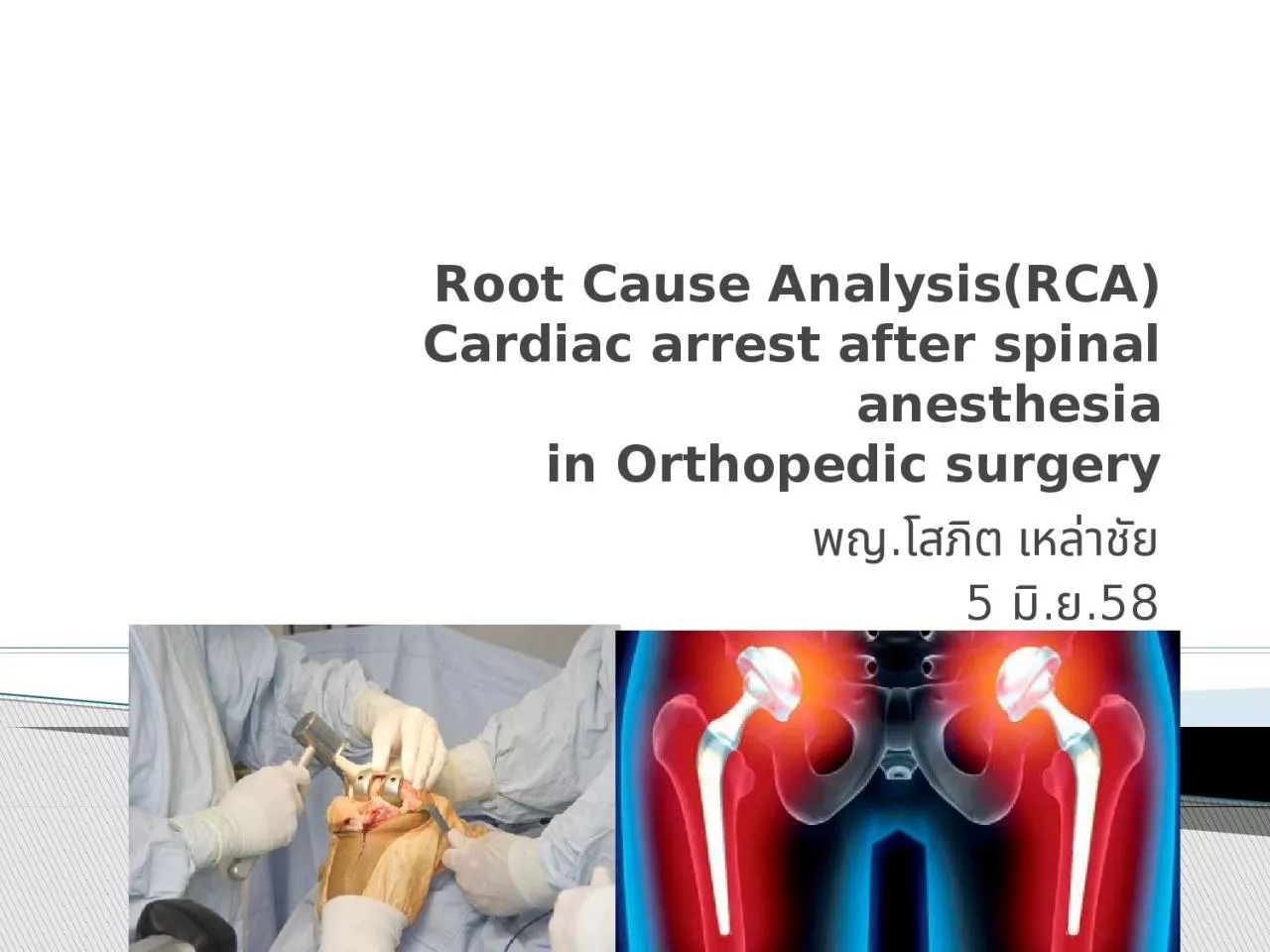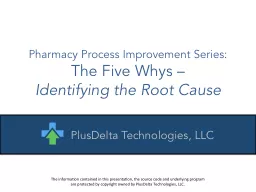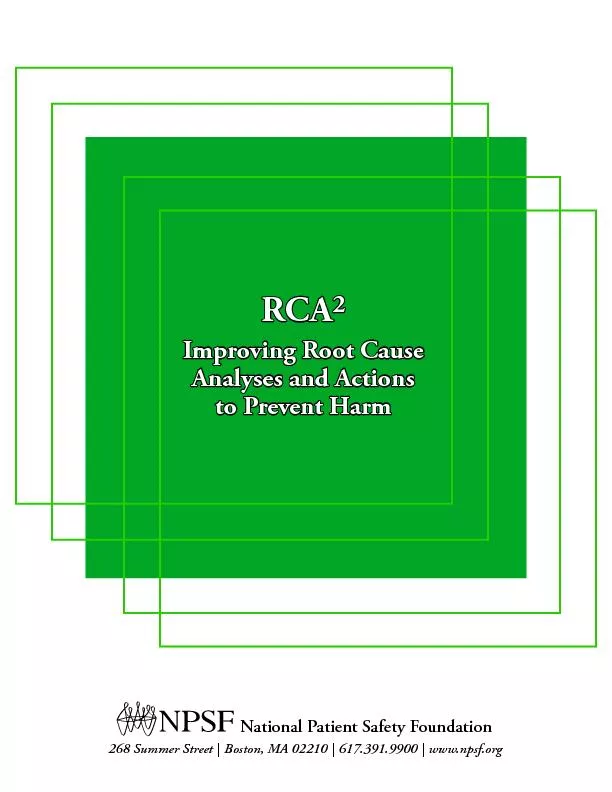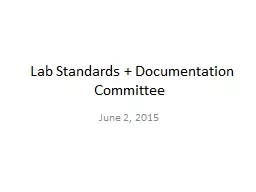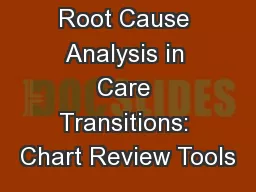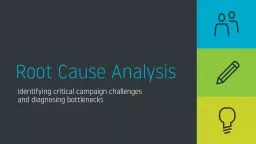PPT-Root Cause Analysis(RCA)
Author : hadley | Published Date : 2024-01-03
Cardiac arrest after spinal anesthesia in Orthopedic surgery พญโสภต เหลาชย 5 มย58 Hypotension Severe bradycardia Cardiac arrest Problems
Presentation Embed Code
Download Presentation
Download Presentation The PPT/PDF document "Root Cause Analysis(RCA)" is the property of its rightful owner. Permission is granted to download and print the materials on this website for personal, non-commercial use only, and to display it on your personal computer provided you do not modify the materials and that you retain all copyright notices contained in the materials. By downloading content from our website, you accept the terms of this agreement.
Root Cause Analysis(RCA): Transcript
Download Rules Of Document
"Root Cause Analysis(RCA)"The content belongs to its owner. You may download and print it for personal use, without modification, and keep all copyright notices. By downloading, you agree to these terms.
Related Documents

